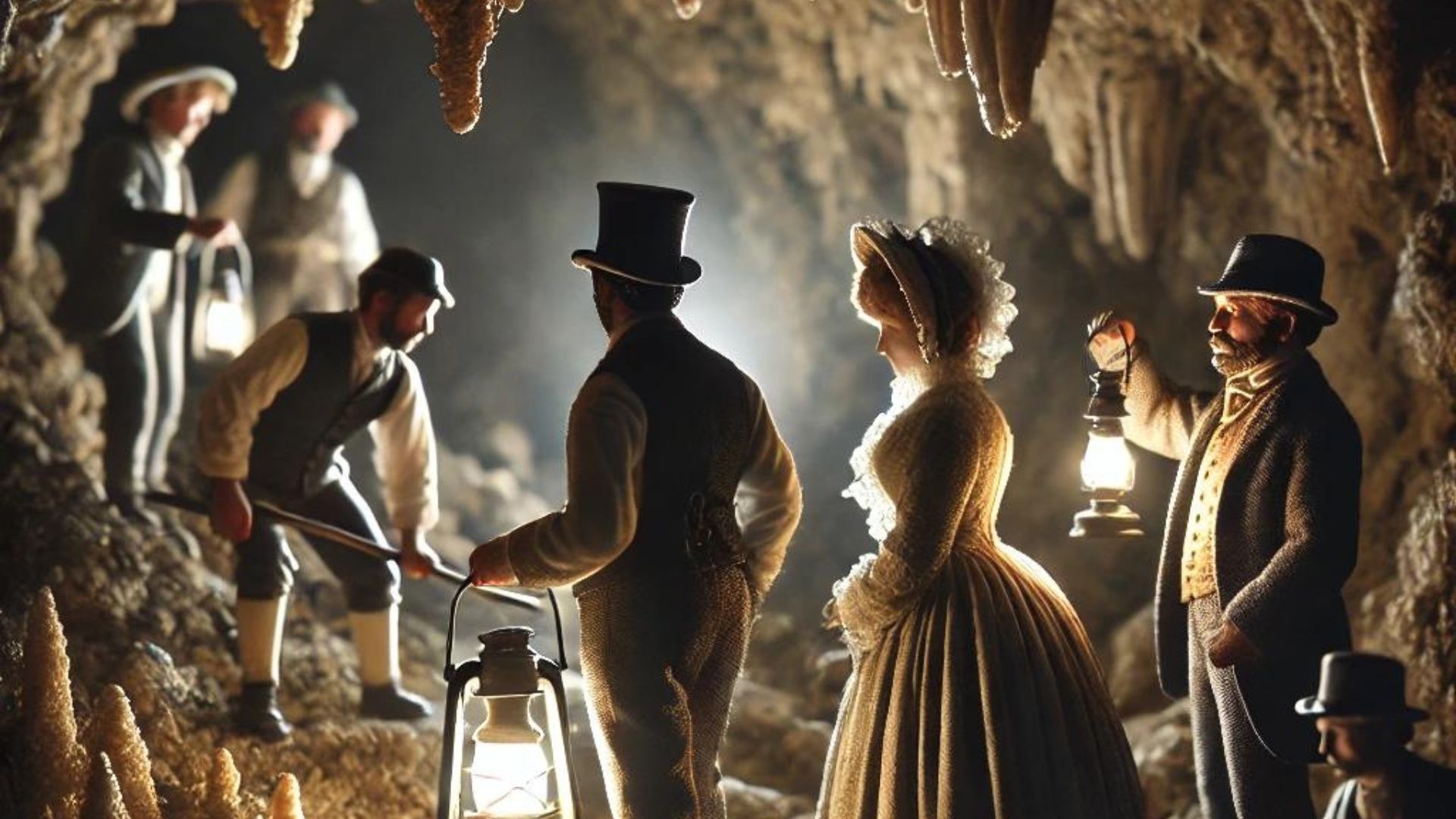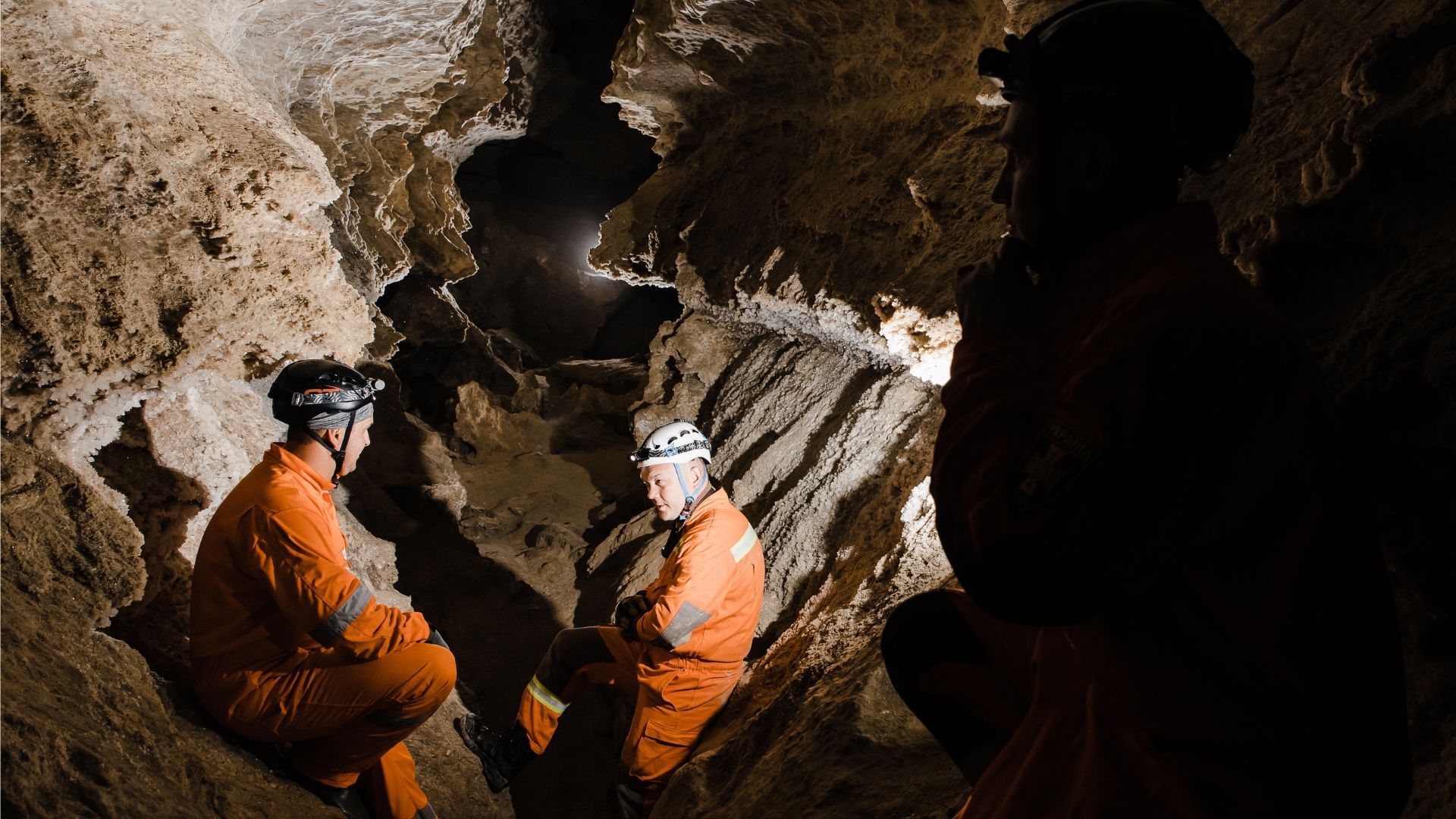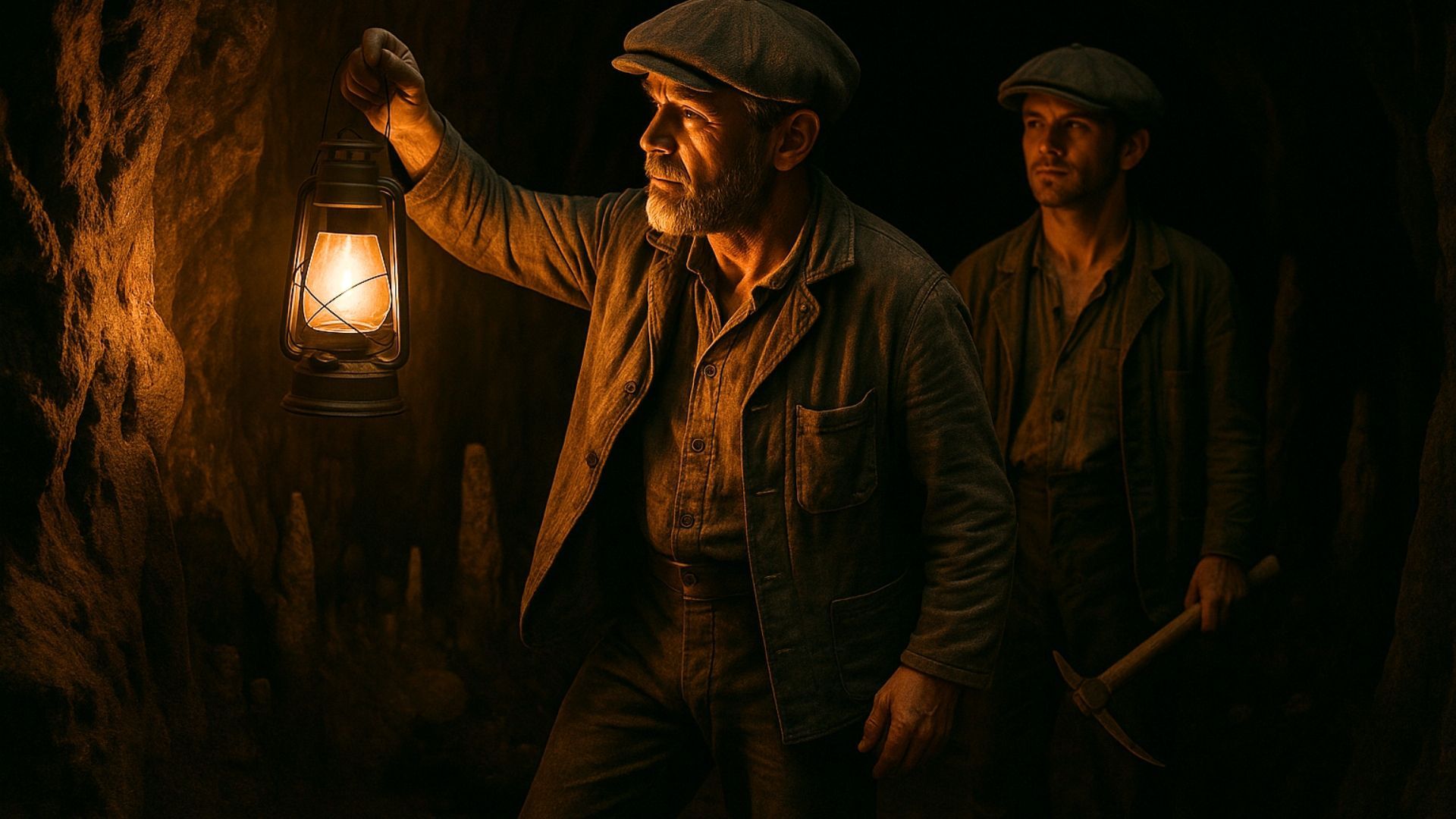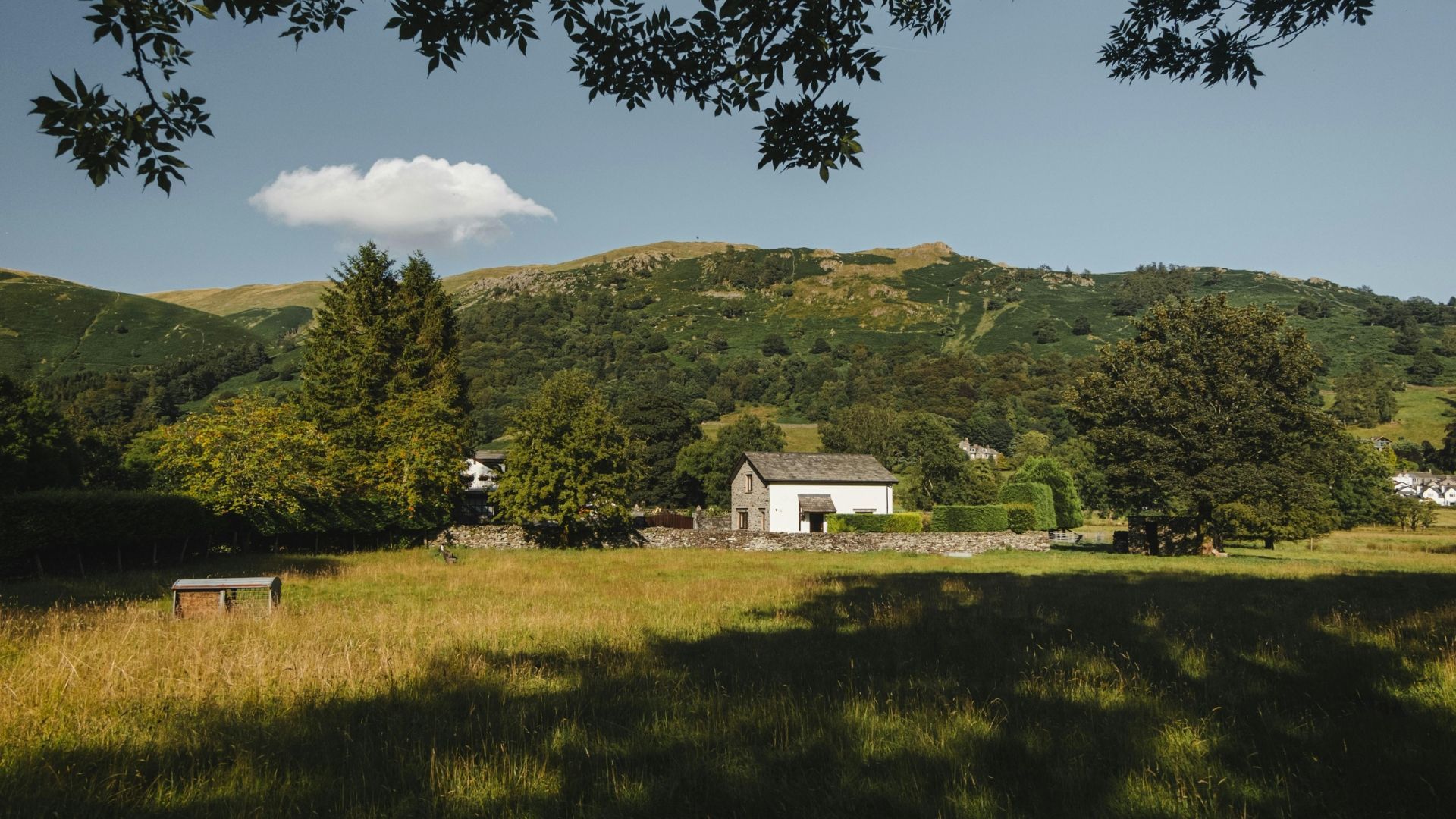Today, Stump Cross Caverns is a modern, easy-to-navigate attraction. But things used to be very different…

Visit Stump Cross Caverns today and you'll see the ancient and the contemporary converge. Our caves were born before dinosaurs roamed the earth – but our visitor centre is bright, spacious and equipped with all the modern conveniences you could ask for.
Descend into the caves and it's the same story. Beautiful prehistoric rock formations stand alongside modern lighting and fact-filled information boards. It's like travelling back in time – but knowing you can
stop for a cup of tea and a slice of cake on your way back to the present.
As custodians of Stump Cross, we've invested heavily in the show cave to transform it into the modern and educational attraction it is today. But it hasn't always been this way. If you could have visited 160 years ago, your experience would have been very different indeed.
Back then, there was no visitor centre. There was no lighting system. There weren't even any stairs.
Yes, Stump Cross in the Victorian era was a very different kind of adventure. But make no mistake – the earliest visitors absolutely
loved
it.
Let's check in with them to find out why.
A deep dive for the upper crust
Stump Cross Caverns was discovered in 1860 by a pair of lead miners called Mark and William Newbould.
The full story is fascinating – but
we've covered it before, so we won't dig into the details here. Suffice it to say, it has a whiff of rags to riches.
The Newbould brothers were a shrewd pair. They were living in the first golden age of tourism – and they'd seen how show caves like Peak Cavern in Derbyshire attracted visitors with time, money and curiosity to spare.
The industrial revolution was in full swing. Yorkshire was booming. If the Newboulds played their cards right, Stump Cross could become the next big thing for Yorkshire's eager upper crust.
So, they set about transforming their discovery into a bona fide tourist attraction. They negotiated a lease with Stump Cross's landowner and put the word out. Before long, the caverns began welcoming wealthy socialites from local boom towns like Leeds and Halifax.
All aboard
By a lucky coincidence, Stump's burgeoning popularity as a tourist attraction coincided with the expansion of the local railway network.
In an age before cars and planes, trains spelt freedom for those who could afford a ticket. So, when stations opened at nearby Grassington and Pateley Bridge, Stump Cross transformed from a remote spot on a windy moor to a viable and accessible day out.
Early visitors would take the train to Grassington and then board an omnibus to the caverns. These omnibuses weren't like our modern double-deckers, though. They had large, spoked wheels and were drawn by horses. As you might imagine, it was a bumpy ride.
On reaching their destination, our visitors were greeted with little more than a hole in the ground. There was no visitor centre back then, so the intrepid socialites assembled at a nearby miners' pub. Here, they would slip out of their crinoline dresses and fine worsted suits, put on overalls and get ready for their adventure below.
No stairs? No problem
Nowadays, you access Stump Cross Caverns via 65 stone steps. It's hardly a glass elevator – but it's easy enough for most visitors to tackle without trouble.
The Victorians weren't so lucky. They entered the caves via the Newbould brothers' original shaft. This meant gripping a rickety ladder and descending – step by cautious step – into the dark unknown below.
And it really was dark. Powerfully, oppressively dark. While the first guides were equipped with paraffin lamps, their tour groups had to make do with the dim glow of candles. Risk assessments weren't really a thing back then.
Steps were put in later. However, they weren't fully completed until after World War II. Just think – visitors were still descending into Stump Cross by ladder while Bing Crosby and Benny Goodman were riding high in the charts.
The first tour guide
In the 1800s, Stump Cross was a family-run business – just as it is today.
Mark and William Newbould might have discovered the caves. But it was their brother, Tom, who first took on the role of tour guide.
Tom Newbould became quite the Stump Cross expert – and made a small fortune in the process. He was paid a shilling a day for his efforts. Considering that the
weekly
wage for a labourer was around three shillings and nine pence, this salary was nothing to sniff at.
If you've visited the caverns, you'll no doubt remember The Butcher's Shop. It's one of our most impressive rock formations – and it was named by none other than Tom Newbould.
For Tom and his Victorian compatriots, the huge slabs of wet rock resembled hunks of meat hanging in a butcher's window. Grisly.
Navigating the caverns
Next time you visit Stump Cross, look out for our flowstone pools. You'll see that a path has been cut through the rock to lower the floor and allow safe passage on foot.
The earliest visitors, however, did not enjoy the luxury of headroom. These same passages were low, damp, narrow and uneven. Tour groups would have to crawl on their bellies to reach the wider passages on the other side.
In case that doesn't sound claustrophobic enough, remember that they were negotiating these cramped spaces by
candlelight. To say that our wealthy visitors were slumming it would be an understatement.
It wasn't all damp and darkness, though. Stump's earliest explorers enjoyed a few perks – including being able to access parts of the caves that are inaccessible today.
One such area was a looping corridor behind the Wolverine Cave, nicknamed the Bowling Alley. That's because it contains several short stalagmites that look a little like bowling pins.
If you're feeling pangs of envy, remember that areas like this are closed off for good reason. The Victorians were hardly the most cautious explorers – and it wasn't uncommon for rock formations to suffer damage as tour groups crawled and clambered through the caves.
Today, we recognise that Stump Cross Caverns is a natural treasure, as well as a tourist attraction. Keeping certain areas off-limits helps to preserve this treasure for future generations.
Besides, the show cave is much larger today than it was in the 1800s. Reindeer Cavern, for instance, wasn't opened to the public until the year 2000. And we're continuing to explore new opportunities to expand the cave and share more of its riches with visitors like you.
Watch this space.
Are you looking for
historical places to visit in Yorkshire? You won't find anywhere much older than Stump Cross Caverns. Our caves were born 300 million years ago, long before humans or dinosaurs roamed the earth. Discover its fascinating story yourself –
book online today.















